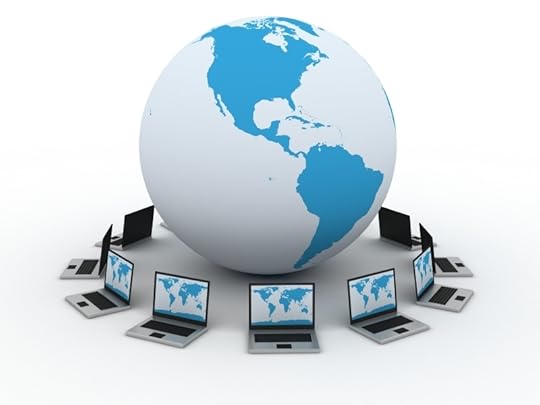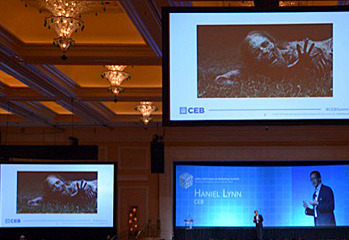Brent Adamson's Blog, page 8
November 12, 2013
4 Skills Every Manager Needs
 If there’s a group that we all know is critical to a successful sales organization, it’s the front line sales managers (those of you reading this who are FLSMs, be proud, but let’s not get crazy just yet). Direct managers have such an enormous impact on rep behaviors (changes or reinforcement), on team climate, on retention of top talent, on attraction of the right talent, and on the most important, performance. It’s no wonder there’s been a renewed focus on sales manager development—the skills a front line manager needs to drive reps to successful outcomes and coming in above goal.
If there’s a group that we all know is critical to a successful sales organization, it’s the front line sales managers (those of you reading this who are FLSMs, be proud, but let’s not get crazy just yet). Direct managers have such an enormous impact on rep behaviors (changes or reinforcement), on team climate, on retention of top talent, on attraction of the right talent, and on the most important, performance. It’s no wonder there’s been a renewed focus on sales manager development—the skills a front line manager needs to drive reps to successful outcomes and coming in above goal.
That said, even though there’s a renewed focus, what many have not yet come to terms with is that the definition of what the best managers look like and do, has fundamentally shifted. Yet, many sales organizations and their managers act as if nothing has changed. It’s as if we are running the NFL coaching playbook from 1956, with different rules and a failure to recognize changes in offensive and defensive schemes. But just like in the NFL, the sales landscape has changed, as has successful leadership competencies (we can all argue another time if the NFL and sales was better “back then”).
Here are some examples of sales manager missteps we are seeing as they work with their sales reps in this new landscape of customer buying and Insight Selling. Maybe these sound familiar to you.
A manager guides reps to just “take a deal” to hit a revenue metric, while profit is significantly reduced (or even negative)
As soon as a sales rep deviates from the prepped call plan, the sales manager jumps in and takes over the sales call – owning it, leaving the rep to sit silently
A manager sees a rep spending time on social media, prospecting, researching, and perhaps sharing relevant information, and discourages the practice to focus on making more dials to customers
These are just a few and, I imagine, we all could come up with a long list of ineffective behaviors in the new landscape (in fact, we have, CEB Sales Members, see the Sales Manager Competency Guide). What we do know, from variety of quantitative and qualitative studies, is that the most effective sales managers take a very different approach to management. Specifically, they excel across four key areas:
Management Fundamentals – items like honesty, integrity, communication
Coaching (bet that didn’t surprise any of you)
Sales Innovation – deal-level creativity coupled with strong business acumen
Climate of Judgment – empowering reps to make decisions and facilitating collaboration
As you move into 2014, ask yourself how will your sales organization arm managers with the right approach in the new sales landscape?
At the CEB Sales Leadership Council, we’ll be hosting workshops specifically designed for heads of learning and development and others that own sales manager development, to arm organizations with the information and tools to develop the manager competencies needed today. Look for dates and locations in the coming months.
November 11, 2013
The Future of Sales Training
 Sales training is a constant concern and focus for sales organizations, especially large organizations with dispersed sales force. We recently had a member come to us hoping to learn how other companies are training their salespeople using new forms of technology.
Sales training is a constant concern and focus for sales organizations, especially large organizations with dispersed sales force. We recently had a member come to us hoping to learn how other companies are training their salespeople using new forms of technology.
Technologically-based training, while far more scalable than traditional face-to-face training, has its own set of challenges. These hurdles range from rep engagement and training retention, to infrastructure capabilities, technology know-how, and prohibitive cost. These were among the potential pitfalls that our member was trying to avoid, or at least plan around, before implementing a new training curriculum.
We profiled five member companies, asking first for a description of their sales force and sales training teams, followed by an outline of the types of training the companies offer with a focus on recent technological advancements.
All of the profiled companies delivered training to reps with a combination of self-paced training through an LMS, in-person instructor-led training, and virtual classroom sessions. Executives reported that this blend allowed for the maximum reach and flexibility of training options for their diverse sales force.
Every company we spoke to had invested in or investigated technology advancements for sales training. One of the most compelling developments was the proliferation of mobile apps intended not only for quick hit training reinforcement, but also for on-the-go sales support. Another valuable technology was high quality video conferencing that acted essentially as a virtual classroom where 15-20 reps could learn from an off-site instructor. While executives agreed that these technologies had their benefits, they were quick to caution the establishment of these training channels as a standard. Compatibility issues complicated mobile app development and global infrastructure inadequacies hindered video conferencing.
Ultimately, executives stressed the importance of the content over the technology used to deliver training. While technology integration is a future certainty, engagement, relevance, and reinforcement were cited as the most important factors to effective training, regardless of delivery method.
CEB Sales Members, check out the full report: Delivering Training to a Large, Dispersed Sales Force and use the profiles to compare your organization’s training automation potential.
November 6, 2013
Changing Your Sales Force’s Habits
 Recently at the CEB Sales and Marketing Summit in Last Vegas, Charles Duhigg, author of The Power of Habit, spoke about what sales organizations can learn from the science of habit formation. In some ways, many of the goals sales leaders are working towards can be summed up to changing or developing new institutional habits. Whether it is training on Challenger Selling, a new CRM system, or updates to the sales process, half the battle with most new sales initiatives is getting sales reps to adopt new behaviors.
Recently at the CEB Sales and Marketing Summit in Last Vegas, Charles Duhigg, author of The Power of Habit, spoke about what sales organizations can learn from the science of habit formation. In some ways, many of the goals sales leaders are working towards can be summed up to changing or developing new institutional habits. Whether it is training on Challenger Selling, a new CRM system, or updates to the sales process, half the battle with most new sales initiatives is getting sales reps to adopt new behaviors.
So how much of a seller’s day-to-day life is determined by conscious decision-making versus habit? According to Duhigg, 45% of daily life choices are based on habits. But as Duhigg also pointed out, habits can be changed and new habits can be formed.
Neuroscientists examining how the human brain works have learned that habits are formed in a three part loop: first there must be a trigger or a cue, or the event that occurs and prompts the person to do something. Then there is a routine, or the actions that the person takes when the trigger occurs. And finally, there must be a reward that happens as a result of the actions taken. It is in fact that reward that makes the behavior become automatic.
At the organizational level, knowing how habits are formed can be a powerful weapon for diagnosing group behavior and for influencing change. In particular, Duhigg advised organizations to leverage three learnings as they try to create new organizational habits:
Crises are an opportunity for change: As a leader try to identify the right moment for the organization to introduce change and think about crises as opportunities to break old habits and introduce new ones. In the mist of chaos, people become both increasingly flexible and willing to rethink “the way things get done around here.”
Habits become culture: Habits define how organizations behave, and therefore changing organizational habits often requires changing the organization’s culture. To increase your chances of success, start by changing your organization’s keystone habits, or the habits that by definition change other habits.
Most powerful habits contain emotional cores: Think about creating a habit loop that relies on intrinsic or emotional rewards. In other words, resist the urge to create organizational habits by setting up transactions for your sales reps that involve reps making changes in exchange for cash rewards. Instead, think creatively about the intrinsic rewards that you can grant your reps that can forge stronger habit routines.
CEB Sales Members, enter here to get more information on CEB’s 2014 Sales and Marketing Summit. Also, review the key findings from our latest research to identify aspects of your sales culture that are acting as barriers to driving new selling behaviors.
How to Create New Organizational Habits
 Recently at the CEB Sales and Marketing Summit in Last Vegas, Charles Duhigg, author of The Power of Habit, spoke about what sales organizations can learn from the science of habit formation. In some ways, many of the goals sales leaders are working towards can be summed up to changing or developing new institutional habits. Whether it is training on Challenger Selling, a new CRM system, or updates to the sales process, half the battle with most new sales initiatives is getting sales reps to adopt new behaviors.
Recently at the CEB Sales and Marketing Summit in Last Vegas, Charles Duhigg, author of The Power of Habit, spoke about what sales organizations can learn from the science of habit formation. In some ways, many of the goals sales leaders are working towards can be summed up to changing or developing new institutional habits. Whether it is training on Challenger Selling, a new CRM system, or updates to the sales process, half the battle with most new sales initiatives is getting sales reps to adopt new behaviors.
So how much of a seller’s day-to-day life is determined by conscious decision-making versus habit? According to Duhigg, 45% of daily life choices are based on habits. But as Duhigg also pointed out, habits can be changed and new habits can be formed.
Neuroscientists examining how the human brain works have learned that habits are formed in a three part loop: first there must be a trigger or a cue, or the event that occurs and prompts the person to do something. Then there is a routine, or the actions that the person takes when the trigger occurs. And finally, there must be a reward that happens as a result of the actions taken. It is in fact that reward that makes the behavior become automatic.
At the organizational level, knowing how habits are formed can be a powerful weapon for diagnosing group behavior and for influencing change. In particular, Duhigg advised organizations to leverage three learnings as they try to create new organizational habits:
Crises are an opportunity for change: As a leader try to identify the right moment for the organization to introduce change and think about crises as opportunities to break old habits and introduce new ones. In the mist of chaos, people become both increasingly flexible and willing to rethink “the way things get done around here.”
Habits become culture: Habits define how organizations behave, and therefore changing organizational habits often requires changing the organization’s culture. To increase your chances of success, start by changing your organization’s keystone habits, or the habits that by definition change other habits.
Most powerful habits contain emotional cores: Think about creating a habit loop that relies on intrinsic or emotional rewards. In other words, resist the urge to create organizational habits by setting up transactions for your sales reps that involve reps making changes in exchange for cash rewards. Instead, think creatively about the intrinsic rewards that you can grant your reps that can forge stronger habit routines.
CEB Sales Members, enter here to get more information on CEB’s 2014 Sales and Marketing Summit. Also, review the key findings from our latest research to identify aspects of your sales culture that are acting as barriers to driving new selling behaviors.
November 5, 2013
How to Train Your Customers
 We recently had a member come to us with a question on a topic we don’t hear that often—customer or end-user training. This member was in the midst of a transition in their customer training approach, going from primarily in-person, to an increasingly technological method of delivering training to customers—and wanted to learn how other companies had incorporated technology into their end-user training models.
We recently had a member come to us with a question on a topic we don’t hear that often—customer or end-user training. This member was in the midst of a transition in their customer training approach, going from primarily in-person, to an increasingly technological method of delivering training to customers—and wanted to learn how other companies had incorporated technology into their end-user training models.
After a broad set of conversations across our member base, we profiled four companies that deliver end-user training and specifically how they use technology-enabled training processes. The training delivery channels used for end-user training were much the same as standard virtual training channels including: webinars (live and virtual), e-learning modules, and YouTube (or other online videos).
Among the customary virtual training channels, there were a few standouts that were particularly interesting, not only for end-user training, but also for sales training in general:
Virtual Conferencing Platform: A virtual platform capable of hosting full-scale conferences complete with exhibit halls, networking lounges, and social and gamification capabilities.
Virtual Classroom: Training intended to mimic classroom training through an entirely online platform.
Remote Classroom: A training session in which attendees gather in one physical location and are connected to a virtual instructor via webcast.
Peer-to-Peer Network: A network of highly engaged and knowledgeable end users recruited to deliver end-user training.
These end-user training channels were successful for the members who implemented them but remain reliant upon infrastructure and end-user capabilities. The most important elements of end-user training that were echoed by all of the members we profiled include:
Blended Learning Approach: The profiled organizations employ a combination of face-to-face and technology-based product training to reach end users; however, virtual end-user training occupies an ever-growing proportion of the overall consumption of content. This blend helps to satisfy all customer types.
Trade-off between in-person and self-paced end-user training: Interviewed executives report that the majority of end users were willing to trade the loss of some face-to-face training for the additional flexibility of online content
Content management: Interviewed executives noted the importance of both posting as much content as possible for online consumption, as well as the need to keep that content up-to-date.
CEB Sales Members, check out the full report: Incorporating Technology into End-User Training and use the company profiles to compare your organization’s automation potential.
Incorporating Technology into End-User Training
 We recently had a member come to us with a question on a topic we don’t hear that often—customer or end-user training. This member was in the midst of a transition in their customer training approach, going from primarily in-person, to an increasingly technological method of delivering training to customers—and wanted to learn how other companies had incorporated technology into their end-user training models.
We recently had a member come to us with a question on a topic we don’t hear that often—customer or end-user training. This member was in the midst of a transition in their customer training approach, going from primarily in-person, to an increasingly technological method of delivering training to customers—and wanted to learn how other companies had incorporated technology into their end-user training models.
After a broad set of conversations across our member base, we profiled four companies that deliver end-user training and specifically how they use technology-enabled training processes. The training delivery channels used for end-user training were much the same as standard virtual training channels including: webinars (live and virtual), e-learning modules, and YouTube (or other online videos).
Among the customary virtual training channels, there were a few standouts that were particularly interesting, not only for end-user training, but also for sales training in general:
Virtual Conferencing Platform: A virtual platform capable of hosting full-scale conferences complete with exhibit halls, networking lounges, and social and gamification capabilities.
Virtual Classroom: Training intended to mimic classroom training through an entirely online platform.
Remote Classroom: A training session in which attendees gather in one physical location and are connected to a virtual instructor via webcast.
Peer-to-Peer Network: A network of highly engaged and knowledgeable end users recruited to deliver end-user training.
These end-user training channels were successful for the members who implemented them but remain reliant upon infrastructure and end-user capabilities. The most important elements of end-user training that were echoed by all of the members we profiled include:
Blended Learning Approach: The profiled organizations employ a combination of face-to-face and technology-based product training to reach end users; however, virtual end-user training occupies an ever-growing proportion of the overall consumption of content. This blend helps to satisfy all customer types.
Trade-off between in-person and self-paced end-user training: Interviewed executives report that the majority of end users were willing to trade the loss of some face-to-face training for the additional flexibility of online content
Content management: Interviewed executives noted the importance of both posting as much content as possible for online consumption, as well as the need to keep that content up-to-date.
CEB Sales Members, check out the full report: Incorporating Technology into End-User Training and use the company profiles to compare your organization’s automation potential.
October 30, 2013
Gamification: Fad or the Next Big Thing in Sales?
 We recently sat down with Rajat Paharia, author of Loyalty 3.0: How to Revolutionize Customer and Employee Engagement with Big Data and Gamification, to learn about how sales organizations are using gamification to motivate sales performance and modify seller behaviors among other things.
We recently sat down with Rajat Paharia, author of Loyalty 3.0: How to Revolutionize Customer and Employee Engagement with Big Data and Gamification, to learn about how sales organizations are using gamification to motivate sales performance and modify seller behaviors among other things.
Gamification, say the experts, is the application of gaming principles to business contexts. Recently, we have seen a trend towards sales organizations gamifying various initiatives that range from basic training, to social selling skills and CRM adoption.
CEB Sales Members—learn from your peers on how to leverage gamification in sales force training.
Many members do report seeing, at least anecdotally, significant increases in employee engagement and motivation as a result of their gamification efforts. But the question we all want an answer to is whether or not gamification is here to stay.
Paharia, at least, would argue yes. According to him, the ROI of gamification is in the lift in performance that sales organizations realize from better motivating sales reps through leveraging data. As he rightly points out, companies rarely dedicate resources to analyzing the data that they have on their employees and using it to better engage and motivate what is arguably their biggest asset. Ask yourself: do Facebook and Netflix know more about your sales employees than you do? The sales organizations that are collecting data, learning about their employees, and using that data to design gamification initiatives that motivate better performance, are rapidly gaining a competitive advantage in the marketplace.
And how exactly are organizations motivating their reps through gamification? What Paharia explains is that gamification takes proven motivational techniques such as leveling-up and leaderboards, which video game designers have used for years to motivate players, and applies them to sales contexts. Consider the few examples below:
Game Levels— Levels indicate long-term progress, signal achievement and show gamer status in the gaming community.
Fast feedback—Players receive visual and audible real-time feedback on actions.
Performance tracking and transparency—Players can easily track where they stand, see their progress towards game goals in real time, and review their historical performance.
In other words, what gamification does is it allows sales organizations to frame work in the fun language of games in order to engage and motivate sales reps. As Paharia illustrates in his book, Gamification is motivating reps through data, which is made visible and digestible for users, and that ultimately informs the user experience.
CEB Sales Members, review our latest research on Gamification, and listen to our webinar on Gamification: The Hottest Trend in Sales Training, to learn about our conversation with D.E. Master Blenders 1753, and how you can design and implement your own gamification initiative.
Also, do you think gamification is here to stay? Share your thoughts with us.
October 29, 2013
The Hidden Costs of Ineffective Onboarding
 Sales organizations spend good amounts of time and resources finding and hiring the best talent. Yet oftentimes, onboarding new hires is treated as an afterthought. The fact of the matter is, though, that an ineffective onboarding plan puts these valuable investments at risk, leading to higher washout rates and extending the amount of time needed to reach full productivity.
Sales organizations spend good amounts of time and resources finding and hiring the best talent. Yet oftentimes, onboarding new hires is treated as an afterthought. The fact of the matter is, though, that an ineffective onboarding plan puts these valuable investments at risk, leading to higher washout rates and extending the amount of time needed to reach full productivity.
On top of this, evolutionary changes in the role of the salesperson are increasing the complexity of the sales function and altering the skills needed to succeed:
Rise of Insight Selling – Insight selling requires business acumen and higher level analytical thinking skills that do not come naturally to many new reps
Growth in Internal Complexity – Reps have to coordinate with a larger number of internal stakeholders and get input from actors across multiple functions within their own organization as they pursue more complex sales
Proliferation of Products and Channels – Most reps today are expected to sell across several product lines and are often involved in more than one go-to-market strategy
Increase in Customer Complexity and Service Expectations – The buying organization is more complex as well, and reps have to deal with diverse decision-makers and influencers to drive a consensus sale.
These four factors have dramatically changed the skill set that new reps need to master. We have not only raised the bar on the level of mastery that reps must achieve with certain skills, we have added completely new skills to the mix as well.
The time required to onboard new sales hires has increased 32% in the last 10 years. This means that if you could count on a rep to start paying you back in 9 months, it now takes a full extra quarter for that to happen. This leads to lost or delayed revenue for your organization as the point in time when reps become capable of delivering the numbers expected from them is pushed further away. However, this extended onboarding period has costs beyond mere lost revenue.
Most organizations recognize that the upfront costs of recruiting and onboarding a new hire are high, and take into account recruitment costs, initial training, base salary, and the opportunity costs of an open territory into planning. However, what most organizations don’t plan for are the incremental costs incurred when some recruits require additional time to reach full productivity, which CEB estimates can be more than $60,000 a month. This would seem acceptable if it were known that you were going to get these sunk costs back down the road. But, for nearly 40% of your new hires, you have no way of knowing whether you’re going to get paid back for spending extra resources on their onboarding, or if they’ll ever reach full productivity or leave before they do.
Beyond the absence of an ROI from onboarding a specific individual rep, underperforming sales reps have a harder to quantify effect on the sales organization as a whole. These reps drag down their entire team as their managers and peers spend their own time and energy carrying them along. Furthermore, a rep that alienates customers or misdiagnoses needs and destroys relationships can cause irreparable, or at least very expensive to fix, damage to the credibility of your organization in the eyes of your consumers.
While new reps are expected to master a larger set of skills in order to be fully productive, the direct and indirect costs associated with underperformance increase the pressure to get reps to full productivity quicker. In this situation, companies simply cannot afford to have an ineffective onboarding plan.
CEB Sales Leadership Council members, join us on November 20th for a webinar in which you can learn how to develop a more effective onboarding plan for your organization.
October 21, 2013
5 Key Questions for Sales
 We’ve just returned from the 2013 CEB Sales and Marketing Summit in Las Vegas (our annual conference of 600+ sales and marketing members), where we discussed, among other things, the next generation of commercial talent. Given all the changes taking place on both the supplier and customer side, we find ourselves questioning how this impacts commercial and talent strategy moving forward.
We’ve just returned from the 2013 CEB Sales and Marketing Summit in Las Vegas (our annual conference of 600+ sales and marketing members), where we discussed, among other things, the next generation of commercial talent. Given all the changes taking place on both the supplier and customer side, we find ourselves questioning how this impacts commercial and talent strategy moving forward.
Before diving into the implications on organizations’ strategies, let’s first take a look at the various changes impacting the sales and marketing environment today:
Changing Impact of Information—because of information overload, customers are now stuck in permanent ‘assessment’ mode. There is so much information for them to sort through, sales cycles are extending and deals often stall or end in no decision. As our research shows, customers are now 57% of the way through the purchase decision before engaging with a supplier.
Changing Nature of the Customer—it’s a fact: the days of the single decision-maker are over. Bigger buying groups are now the norm – in fact, the average buying group size today is 5.4 people. And it’s twice as hard to reach group consensus on a decision as it is for an individual to make a decision.
Changing Nature of Work—the different paths that customers are taking to learn, and the different buying authorities/groups sellers face are resulting in greater variability than ever before. The sales process becomes less predictable in this world – throughout the sales process sellers must now infer, adapt, and anticipate customers’ reactions and possible roadblocks.
Combine this together and what becomes clear is that we’ve entered a completely new commercial environment – a more variable world that includes lengthening sales cycles, more stakeholders to select and manage, and increased steps to deal closure.
All of this change taking place obviously has significant implications on organizations’ commercial strategy, and in particular, their talent strategy. After sharing these findings with members in Las Vegas, the first question they (understandably) asked was: Is our current talent equipped to handle this new environment?
Well, in order to understand the talent they need today, organizations must first understand the environment in which that talent must operate and succeed today.
And the best way to understand that environment starts with answering these five key questions:
1) Do we know who is involved in a typical customer purchase?
2) Can we map our customers’ progress through that purchase?
3) Can our reps exercise necessary judgment to impact that purchase?
4) Can our marketers’ disrupt the customer’s purchase?
5) How do we know?
Only once you can answer YES to all of these questions will you have an in-depth understanding of today’s commercial environment and therefore, an understanding of the talent (and support tools) you will need to succeed.
We would love to hear from you. Are there any questions you would add to this list that you believe are required to properly understand today’s buying environment? Let us know in the comments section below.
CEB Sales members, learn more about how you can empower your reps to sell to today’s empowered customers, or read more about today’s new era of selling.
October 17, 2013
My Week in Vegas: Talent, Zombies, and a Little Magic
Last week I was fortunate enough to attend CEB’s Sales and Marketing Summit in Las Vegas, and I came home impressed and motivated to apply what I saw and learned. As in previous years, the summit sold out several months in advance, as it has established itself as the premier learning gathering for heads of sales and marketing.
The theme of the conference was “The Next Generation of Commercial Talent”. Across the conference content and throughout the networking discussions, three underpinning topics coalesced: consensus, reputation, and effort.
1. The Era of Consensus Buying – and Marketing’s Mandate:
Anyone who has been around CEB’s research the past few years has witnessed the impact that The Challenger Sale has had on B2B sales and marketing strategies. Challenger was born not out of a change in selling, however, but a change in buying. And the latest evolution in buying is around consensus decision-making. Today, on average, more than five different people get involved in any given decision for a business purchase. And CEB’s research shows that the more people are involved in the decision, the more it is likely that NO action will be taken.
When group decisions are made, they aren’t only about which supplier to choose; they are also about what type of solution will solve the challenge facing the group. And that decision is made well before any interaction happens with suppliers. So what can suppliers do? Marketing needs to influence the decision outcome before Sales can even get involved. How? Enable mobilizers. Arm them with tools that lead to the type of solution you provide, (not just your specific flavor) in a vendor-neutral fashion. And then arm your Sales reps with commercial insight.
2. The Evolving Reputation of Sales:
As organizations transform their sales functions for insight selling, they often gravitate towards skill development of their existing sales reps. This helps expedite training initiatives, but it inevitably leads to interesting debates around what makes for today’s ideal sales rep – and what makes for an ideal place for reps to work.
Several presentations at the summit focused on the culture that organizations should foster — not just to develop their current sellers, but to attract tomorrow’s stars based on the promise of a good career. Depaul University has established a Center for Sales Leadership – effectively a “Major” in Sales. Daniel Strunk, Depaul’s managing director for the center, anchored a fascinating panel session about the image of sales, and what attracts young college graduates to sales today.
Other sessions focused on the cultural importance of front-line managers. Established managers must be able to adopt to the changing buying and selling environment. First-time managers must make the leap from selling to leading teams. But in some ways the transition to Insight Selling is harder for existing front-line managers, as they must “Flip” from directive to supportive styles of management.
3. The Effortless Experience – Not Just for Customer Service:
Last month, the newest book from CEB went on sale in North America and Europe. Matthew Dixon, (coauthor of The Challenger Sale), Nick Toman and Rick Delisi published The Effortless Experience. At the summit, the authors outlined key findings from the book, and later gave out signed copies. The book based on research from CEB’s Customer Contact practice, identifies a major flaw in the conventional wisdom that businesses should over-invest to delight customers in service interactions. It turns out that the biggest driver of customer loyalty and repeat purchase is actually providing a low-effort service experience. Here’s a nifty video overview.
So why was this featured at a sales and marketing conference (and why did it generate so much buzz)? Because customer effort is deceivingly important for leaders of those functions. In Sales, many leaders either directly oversee customer service or care greatly about post-sales customer service in the interest of account health. And for marketers, understanding how the customer experience can be improved to help generate more loyalty – and therefore more revenue – is a primary concern for both B2B and B2C marketing leaders.
Other Highlights

Haniel Lynn channels the un-dead to kick off the CEB Sales & Marketing Summit.
Scariest presentation: Any good speaker gets people’s attention, but CEB General Manager Haniel Lynn took things a step further by loading up his presentation with a montage of zombie photos. I was relieved that he didn’t use any “live” props.
Best use of video: Handshakez CEO Jason Wesbecher gave an entertaining presentation comparing B2B selling to dating, including this compilation video of speed dating fails.
Most often-heard advice: Near universal agreement from the various presenters on the need to shift beyond email marketing and accelerate Social Selling.
Most entertaining moment: Shimshi the illusionist worked the crowd at the Tuesday night reception. I won’t reveal too many details of his magic, but let’s just say that everyone who saw him in action will be talking about it for a long time.
CEB Members: Visit the CEB Sales and CEB Marketing websites to access all the conference materials and share with your team members.
Were you at the Summit? Share your takeaways, highlights, or scariest moments.
This is a guest post by Ian Walsh, Senior Director and Channel Marketing Lead at CEB.
Brent Adamson's Blog
- Brent Adamson's profile
- 9 followers



